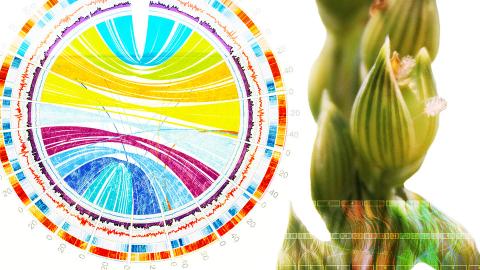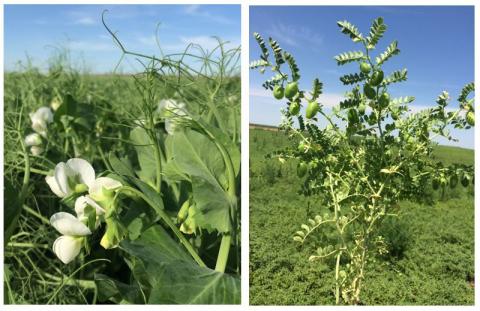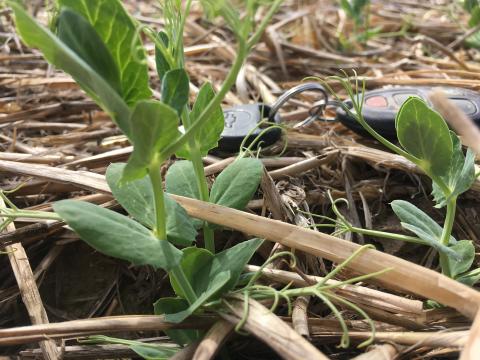Main Factors Influencing Yellow Field Pea Protein Content in Nebraska
January 23, 2020
Yellow field peas (Pisum sativum L.) recently gained popularity across Nebraska due to their rotational benefits and increase in consumers' demand for plant-based alternatives to meat and dairy products.
New Study Helping to Guide Future Nitrogen Management of Winter Wheat for Grain Yield, Protein, and Bread Quality
October 29, 2019
Preliminary results are in from the first year of a two-year study to evaluate how soil N levels affect protein in Nebraska wheat and to provide data to revise UNL fertility recommendations for dryland wheat.

Sequencing of Proso Millet Genome Could Raise Yields, Expand Production Range
March 4, 2019
Researchers have now sequenced and mapped the genome of proso millet – a feat essential to raising yields of the drought-resistant crop in the Nebraska Panhandle and semiarid regions where population booms foreshadow food shortages.
UNL, CSU Organize International Proso Millet Symposium for Aug. 8-11
July 23, 2018
This International Millet Symposium will focus on millet production in the United States and the world; millet breeding, genetics and genomics; and millet uses and products around the world. Nebraska is one of three states producing 95% of the US crop.
January Pulse Crop Programs Offer Two Approaches to Fit Your Needs
January 9, 2018
Learn about and engage with the expanding pulse crop industry at two events being held in western Nebraska this month: the Pulse Crops Workshop Jan. 17 at Bridgeport and the Pulse Crops Expo Jan. 18 at Grant. Check the agendas and register for one or both events by Jan. 16.
Field Pea Field Days Scheduled for June at 5 Locations across Nebraska
May 24, 2017
Field day participants will be able to view field pea varieties and learn about rotational benefits and agronomic practices to profitably grow field peas and integrate them with existing cropping systems.
Yellow Field Peas Fare Well After Recent Lows
May 4, 2017
Most yellow field pea being grown in western Nebraska were at early vegetative stages (4th to 7th node or 1-5 leaf stages) during last week’s cold snap, but extensive damage is not expected due to the pea’s level of frost tolerance.Field pea tolerance to frost during early stages of vegetative growth is partially due to the “hypogeal” germination nature of the crop. For plant species with hypogeal germination (e.g., field pea, lentil, chickpea), shoot germination occurs belowground.
Field Pea Seeding Rates, Seeding Depth, and Inoculant
March 13, 2017
Grain-type field peas are a cool season grain crop grown as an alternative for no-till summer fallow in a semiarid cereal-based cropping systems such as wheat-corn-fallow and/or wheat-fallow. They are typically planted in mid-March and harvested late-July. This article reports on research conducted on seeding practices and offers recommendations for producers on the economically optimal seeding rate, seeding depth, and inoculant to grow field peas in western Nebraska.






